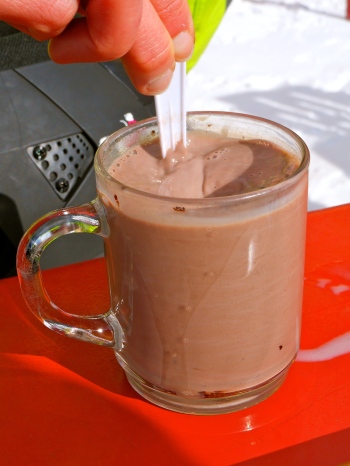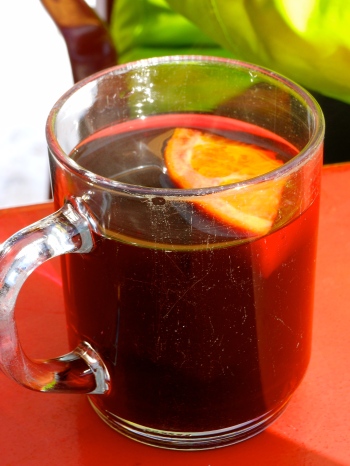
Whether it is hot cider, toddy, coffee, tea, atole, wedang jahe, vin chaud, mulled wine, or hot chocolate, when it’s cold outside people warm themselves up with a hot drink. For some, après-ski is a big part of skiing. It refers to socializing and having drinks after swooshing down the slopes. On the slopes and après-ski (which translates to after skiing), people sometimes drink something with a little kick. As you can see below, not all après-ski beverages are hot. Nevertheless, in the cold of winter, there’s nothing like a hot beverage to warm you up. Here, we’ve seen things other than your normal piping hot tea… and they’re dangerously delicious.


Vin chaud (which translates as “hot wine”) is red wine mixed with a bit of sugar, cinnamon, and lemon. Other countries call this mulled wine, Wassail, Glühwein/glow-wine, Glögg/gløgg, bisschopswijn/bishop’s wine, greyano vino, cooked wine, quentão, vinho quente, boiled wine, vin brulé, karstvīns, hot wine, grzane wino vin fiery, or Glintwein. Clearly, it’s a popular beverage. Just be careful, all that sugar can leave you feeling less than sweet if you are, ahem, over served. Thankfully, it’s available everywhere.
Friends from the Nordics make it when they have people over. They add almonds and raisins to their glass. It adds a nice flavor and soaks up the liquid so they’re extra yummy.

Hot spiced rum/hot buttered rum is a little more British than traditionally Swiss. Then again, the Brits have been vacationing in Switzerland for centuries. Byron, Churchill, Prince William and Cate Middleton have all been, so maybe it’s not so unusual after all.
 Yum! Hot cider. With all the whipped cream and, um, additives, it may not be as healthy as pure apple cider but it feels cozy and helps fight off the winter chill. It’s not widely available here. In fact, I’ve only seen it a couple of places.
Yum! Hot cider. With all the whipped cream and, um, additives, it may not be as healthy as pure apple cider but it feels cozy and helps fight off the winter chill. It’s not widely available here. In fact, I’ve only seen it a couple of places.
 Hot coffee is my favorite beverage. I freely admit it. I’m an addict and drink coffee every morning. Sometimes, adults like to add more than just cream or sugar to their coffee. Popular additions include: Bailey’s, Kahlua, Grand Marnier, Amaretto, brandy, Irish whiskey, Amaretto and Cointreau. On the slopes, I don’t want anything alcoholic, so I love a good cup of strong coffee with some cream. Here, it’s usually real cream or milk and not the inferior (but great in a pinch) creamer cups you get in the US.
Hot coffee is my favorite beverage. I freely admit it. I’m an addict and drink coffee every morning. Sometimes, adults like to add more than just cream or sugar to their coffee. Popular additions include: Bailey’s, Kahlua, Grand Marnier, Amaretto, brandy, Irish whiskey, Amaretto and Cointreau. On the slopes, I don’t want anything alcoholic, so I love a good cup of strong coffee with some cream. Here, it’s usually real cream or milk and not the inferior (but great in a pinch) creamer cups you get in the US.
Warning: In researching this, I found at least one article about insurers rejecting claims from drunk skiers.













































